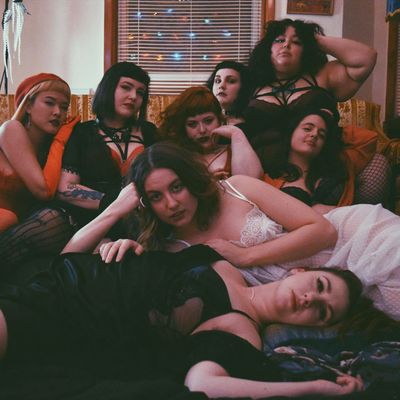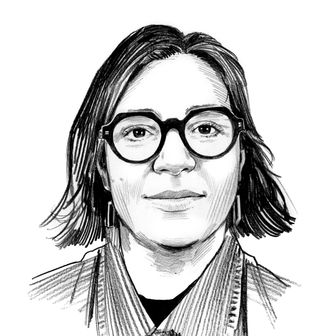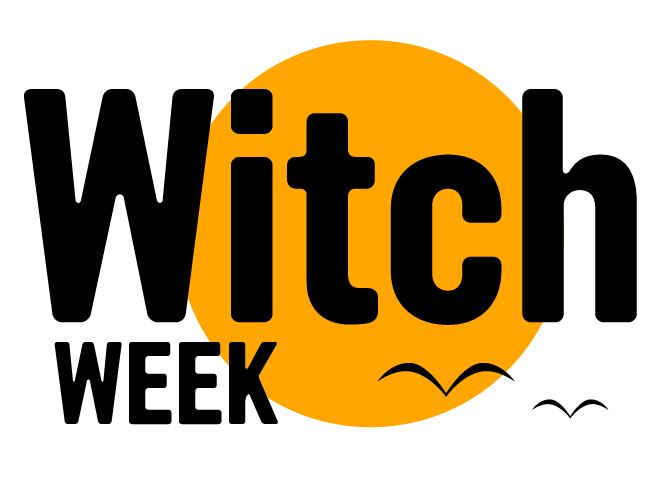
In TV, movies, and real life, women have been at the forefront of the year’s biggest stories — so this Halloween season, we’re looking at pop culture’s most wicked depictions of female power.
On a recent October night, three witches dressed all in black made their way across the river from New Jersey to Vulture’s offices in Tribeca. Yema Rose, Haleigh, and Brielle are members of a coven with four other witches, most of whom identify as queer and femme. All of them are in their 20s, and most are artists or musicians. Their first meeting as a coven took place just after last Halloween, on Samhain, a pagan holiday marking the beginning of winter. They meet every other week for lessons in spellcraft — they take online courses through the School of Witchery — and vegan feasts. They also make up their own holidays, like Gaylentine’s Day. (“It’s like Galentine’s, but a lot more queer.”)
We were gathered to discuss representation of witches in the media, and I asked them to begin by naming their favorite witch in popular culture.
“God, just one?” asked Yema Rose. After a moment of consideration, she declared, “Sabrina. She’s my homegirl.”
“When I was very young, I saw Witches of Eastwick for the first time,” said Brielle. “I’d have to say either Cher’s character or Susan Sarandon’s character. They’re just so iconic. And their hair was amazing.” (“Yaas,” agreed Yema Rose, lightly snapping her fingers.)
“Charmed was very formative for me,” said Haleigh. “Alyssa Milano’s character Phoebe was definitely the one who I gravitated towards, because she was the troublemaker, she didn’t do things by the book, and she was also a little slutty.” The girls all laughed. “Actually, she was really slutty,” Haleigh conceded.
Below, the highlights from our roving conversation about what pop culture gets right and wrong about witches, the feminist power of witchcraft in media, and their biggest problem with Disney movies.
“I really, really love The Craft.”
I asked the girls to reflect on the history of representations of witches in various artistic mediums over the centuries. Historically, they pointed out, representations have fallen into two basic categories: the ugly decrepit hag and the young hypersexualized woman who exists for male consumption.
“Probably one of the most popular early witches would be the Wicked Witch of the West,” said Haleigh. “She’s very ugly especially in comparison to her sister, Glinda the Good Witch, who is very innocent and beautiful.”
Of course, The Wizard of Oz is just one of many witch movies that sets up a conflict between good and bad witches. Take that iconic ’90s witch flick, The Craft. There, the girls professed mixed feelings. “I love The Craft as the epitome as the ’90s witch, because the ’90s witch is so iconic,” said Haleigh. “It’s interesting, every time feminism makes a turn for a new era, there’s also a resurgence in witchcraft. You saw it in the ’70s, when a lot of it had to do with holistic herbal medicine, then you see it again in the ’90s, and that’s when you see a lot of the most iconic witches, especially for our age group: The Craft, Hocus Pocus …”
“Sabrina,” added Yema Rose. “Buffy.”
“You saw this resurgence of the ’90s witch and the teen witch,” Haleigh continued. “So for that reason, I really, really love The Craft. It’s so iconic aesthetically and it’s still super influential on a lot of modern fashion when you look in groups of witchy femmes.” She raised her eyebrows, perhaps nodding to the fact that her blunt black bangs, chunky rings, and pentagram necklace could have fit in easily with the L.A. coven. “And there is some real witchcraft in it,” she said. “Some of the rituals that they do and the spells that they do have a base in real witchcraft.”
“But in any movie where there’s a white witch and a dark witch, that’s just another way to pin women against each other,” said Yema Rose. “Which is what The Craft did. Instead of these women coming together and working together, they’re fighting each other.”
“It’s like Mean Girls with witches,” said Brielle. “Still, it’s so good.”
“You can love something for many reasons and still criticize it,” agreed Haleigh.
Why they love Practical Magic
The girls felt less conflicted about the 1998 critical flop, Practical Magic.
“That’s one of my favorites because the whole story is just about the women in the movie. Yes, it’s a love story and there are men but they exist on the sidelines,” said Haleigh.
“They’re accessories,” said Brielle. “It’s really about these three different generations of women.”
“Those aunts are some of my favorite,” added Haleigh, of the two older witches played with delightful campiness by Stockard Channing and Dianne Wiest. “They’re who I want to grow up to be.”
The girls erupted in a chorus of cheers and agreement.
The sexual awakening of The Witch
Haleigh said that one of her absolute favorites is the 2015 horror film The Witch, which she’s seen six times. (When Yema Rose bemoaned the fact that she hadn’t seen it yet, Haleigh promised her they’d watch it together at one of their bimonthly coven meetings.) The movie tells the story of a 17th-century family’s terrifying unraveling in the New England wilderness, culminating with a young woman’s decision to become a witch.
“She’s a young woman about to start her journey into puberty,” Haleigh explained.
“Even her own brother sexualizes her,” Brielle said. “She’s 14 and the family is already talking about selling her off to be married.”
“So many witch stories tell this story: Women come into their magic at the same time as they come into puberty. Their magic lines directly up with their sexual blossoming.” Haleigh said. “At the beginning, she’s not a witch at all. But after her family is destroyed, she’s like, ‘I have nothing and I’m just going to find my power.’ She literally walks naked into the woods and sees the fire and the witches writhing around it. It’s not necessarily a realistic depiction of what witches do or ever did do, but I really connected to the idea that you find witchcraft through persecution. I think that’s why a lot of people are drawn to witchcraft — they don’t fit in, they’re queer or a person of color or just a little weird.”
The girls nodded in agreement. They also appreciated the question the young woman must answer, poised by a devil-type character, before she decides to become a witch: “Wouldst thou like the taste of butter? A pretty dress? Wouldst thou like to live deliciously?” Pretty much Gaylentine’s Day, in a nutshell.
What Disney movies get wrong
So, what are the worst and most irritating depictions of witches in pop culture? Yema Rose mentioned The Little Mermaid’s Ursula; Brielle mentioned Sleeping Beauty’s Maleficent.
“They’re super spiteful and envious of the protagonist who’s supposed to be so young and innocent and beautiful. They spend the whole movie constantly trying to sabotage the young girl,” said Yema Rose. “Fuck Disney.”
“I’ve always loved the villains,” admitted Haleigh.
“Even Ursula,” said Brielle. “Her makeup was on point.”
“Generally what they’re going for, though, is that she’s supposed to be ugly and evil,” said Haleigh.
“And we’re hot,” said Brielle. “That’s another thing.”
“On a very superficial level, witches are not ugly,” nodded Haleigh. “We’re really cute.”
The conversation turned to another Disney witch flick, Hocus Pocus. “The Sanderson sisters are all so fun and whimsical,” said Brielle, “but the one thing that really bothered me was the idea that there’s a devil behind a coven of witches and it’s got to be some type of masculine evil presence. I mean, that trope — it’s old and boring, and it’s just not true. We’re so incredibly far removed from that.”
The girls murmured their agreement. “The idea that we’re dependent on the patriarchy,” said Yema Rose.
“Witches as just a servant for a man, doing a man’s bidding …” continued Haleigh.
“When in reality …” added Yema Rose.
“It’s just not true,” finished Haleigh.
“I didn’t like the Sanderson sisters,” said Yema Rose.
“Oh, I did,” said Haleigh. “They’re fun.”
“I did vibe with slutty one,” agreed Yema Rose. “But overall they weren’t nice to each other, and that seems counterintuitive. If you’re going to be evil, be evil together.”
On whitewashing in witchcraft
Brielle suggested we talk about the history of whitewashing witches in media. “Even in our coven, we’re mostly white,” she said.
“We own our privilege around that hard,” said Yema Rose.
“An overall critique of witches in popular culture is that they are primarily white,” said Haleigh. “So much of witchcraft and the backbone of witchcraft comes from people of color.”
“African religions,” suggested Yema Rose.
“Vodoun, Santeria,” said Brielle.
“When you talk about black magic — bad, evil magic — it’s often stuff that stems from Vodoun, Santeria, and so on,” said Haleigh.
Yema Rose offered American Horror Story: Coven as a recent example: “I loved it for an aesthetic reason, but it was definitely worth a critique.”
“It’s really hard to consume any sort of media without being like, ‘I really love it, but here’s 27 things that are wrong about it,’” said Haleigh. “I loved Coven as well, but it definitely vilified the magic centered around people of color. Even though so much of the magic that is commonplace today is appropriated from witches of color.”
“As a practicing witch, you have to acknowledge that,” said Brielle.
“You have to do your research and find out where practices come from,” Haleigh said. “Be aware of the root of what your practice is.”
Should witches be scary?
I asked the girls what they thought about the witch as a subject of horror films. A few nights earlier, Yema Rose watched Carrie for the first time. “She’s not often classified as a witch, but that’s what she is,” said Yema Rose. “I didn’t think it was scary, I thought it was sad. A lot of her magic comes out when she’s being abused by her overly religious mother or kids at school. I feel like that’s a real experience.”
Brielle, for her part, loves scary witches. “There’s power in scaring people,” she said. “I do like the trope that women who cause mischief and magic are powerful. It’s about exerting power when you feel like you don’t have any. And it can be scary — I was harassed by someone on the street a year ago and I whispered something in gibberish to him. I was joking, but I loved his reaction. He was definitely a little concerned. And I accept that. I like being a weirdo, for sure.”
“I want to see more fat brown witches.”
“There’s definitely a parallel between people who identify as witches and people who are queer, and often times they’re the same people,” said Yema Rose. “Especially lesbians who have made men irrelevant. That’s extremely threatening to the patriarchy since they’re no longer reliant on the patriarchy, which is another reason you’d want to demonize them and make them ugly and terrible.”
At the same time, the girls pointed out that there aren’t many openly queer witches in popular culture. “I love Willow so much,” said Haleigh, of the Buffy the Vampire Slayer character who comes out of the closet in the show’s fourth season.
“And Lafayette on True Blood!” said Brielle.
“You don’t see male witches that frequently, so it was pretty cool that he was not only a male witch, but also a person of color and openly queer,” said Haleigh. “That is a rarity.”
“Who else is openly queer and a witch?” Yema Rose paused, then she looked around at her fellow coven members. “I can’t believe I can’t think of any other examples. I’m ashamed of myself.”
“It’s not you,” said Brielle. “It’s the world.”
They sat in silence for a few more minutes. “Well, Dumbledore!” said Haleigh. “He’s gay as fuck.”
“White cis men are the first to be represented always,” said Yema Rose. “I want to see more fat brown witches.”
“They exist everywhere IRL,” said Brielle.
“In 20 years, I hope the answer to that question will be very different,” concluded Haleigh.



